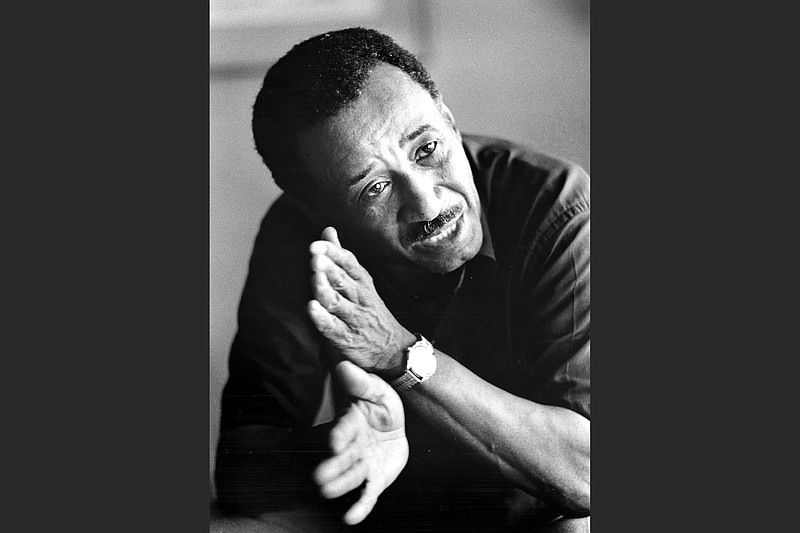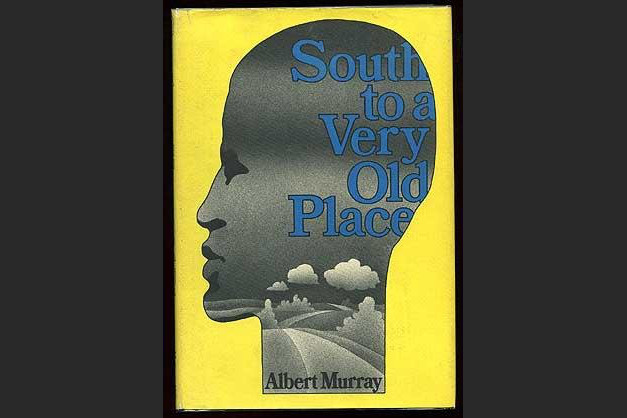It started as an assignment for Harper's Magazine in 1969. Willie Morris was the editor then, and he figured it would make a good story to have Albert Murray, an Alabama native residing in Harlem at the time, to head back South to Alabama on the magazine's dime and talk to people along the way. People like Shelby Foote, Hodding Carter, Walker Percy and other writers and journalists.
Murray — an essayist, cultural critic, novelist, biographer and Air Force veteran who died in 2013 at age 97 — was Black. His sources were all white.
Harper's never ran the story, which is just as well because Murray turned it into "South to A Very Old Place," the 1971 memoir-travelogue that combines literary criticism, incisive social observation, nostalgia, jazz, blues, history and more into one quick burst of style, intellect and passion.
"I'm not down here to run any statistics but just to see how it feels," Murray writes from Atlanta. "I'm operating on my literary radar, this time, my metaphor finder."
"South to A Very Old Place" was nominated for a National Book Award and, in 1995, selected for the Modern Library series as a contemporary classic. The New Yorker said that it was informed by "the poet's language, the novelist's sensibility, the essayist's clarity, the jazzman's imagination, the gospel singer's depth of feeling."
The book and its 50th anniversary is the subject of a special online panel presented by Central Arkansas Library System's Six Bridges Book Festival at 6:30 p.m. Thursday.
The panel members:
◼️ Benji de la Piedra, an oral historian who teaches at the University of Arkansas at Little Rock's public history master of arts program.
◼️ Carolyn Jones Medine, professor in the religion department and in the Institute for African American Studies at the University of Georgia.
◼️ Paul Devlin who, with Henry Louis Gates, Jr., is co-editor of the Library of America's "Albert Murray: Collected Essays and Memoirs" and "Albert Murray: Collected Novels and Poems."
◼️ Journalist Lee A. Daniels.
◼️ Lewis P. Jones III, Murray's literary executor.
Registration is free. See arkansasonline.com/125murray for details.
MURRAY, VIA ELLISON
De la Piedra's gateway to Murray was through "Invisible Man" author and Murray's pal, Ralph Ellison.
"They were intellectual partners," de la Piedra says from Washington, near where he grew up and where he is a Visiting Scholar at the Library of Congress' John W. Kluge Center. "I had been doing work on Ellison since I was an undergrad in 2012-'13. As you do research on Ellison, Murray's name comes up."
He's working on a book about Murray and Ellison's relevance to debates about the role and craft of journalists in the George Floyd protest moment.
"When the George Floyd moment started to unfold, that's when I really started looking at Murray," de la Piedra says. "There are a lot of really crucial ideas he has that helped me make sense of what was going on."
De la Piedra met Devlin at an Ellison symposium at Oxford University in England in September 2017, and it was Devlin who sent him a copy of "Albert Murray: Collected Essays and Memoirs," which includes "South to A Very Old Place."
He admits that it took a few tries to make it through the wordy brambles of "South to A Very Old Place."
"Murray has this style, especially for a modern reader who is used to skimming, that can be demanding. You really have to hang with him."
Indeed. "South to A Very Old Place" is gonzo-bonkers, with bottle rockets blasting from paragraphs; it's told in second person with large chunks in italics and nary an actual interview in sight. Murray throws down on race, culture, Uncle Remus, folklore, Hemingway, house slaves, Dizzy Gillespie, Frederick Douglass, Nashville Fugitive Poets. There's Tom Mix and T.S. Eliot and Dickens and Thomas Wolfe and William Faulkner ... lots and lots of Murray's beloved Faulkner.
But there are rewards for hanging in there. De la Piedra talks about the first chapter of "South ... ," the one that gave him fits at first, when Murray is actually still up North, visiting Robert Penn Warren and Arkansas native and historian C. Vann Woodward at Yale University.
"That chapter is Murray setting up his architecture of ideas. It's dense with ideas. This is one of the things about Murray that I really love, his way of intervening in the intellectual climate of his day."
Murray wrote four novels and several books on music including "The Hero and the Blues," "The Blue Devils of Nada" and "Stomping the Blues." He also co-wrote Count Basie's autobiography, "Good Morning Blues."
His first book, 1970's "The Omni-Americans: New Perspectives on Black Experience and American Culture," prompted Walker Percy to write that it "fits no ideology, resists all abstractions, offends orthodox liberals and conservatives, attacks social scientists and Governor Wallace in the same breath, sees all the faults of the country, and holds out hope in the end."
INTELLECTUAL MAVERICK
Murray was an intellectual maverick, de la Piedra says.
"He was not against revolution. He just wanted to make sure the revolution was smart and studied and learned and well-read. He has this real emphasis on fact. He's not cynical and he's not trying to shoot people down. There is a realness about Murray; he's a thorough thinker."
De la Piedra hopes Thursday's discussion will help readers get to know Murray and will be a helpful guide into one of the author's most lasting works.
"The reason I tried and tried again [to read "South to A Very Old Place"] was because I knew that Murray matters so much to me and what I'm trying to do in my own writing," he says. "One thing I'm hoping to achieve is to give audience members and prospective readers a good orientation of what you can expect in the book ... his style, the depth of the points he's trying to make, what he's really going for in the statement of this memoir.
"Another goal is to honor Murray, and we're doing that with the blessing of his estate. These scholars we have lined up are major players. I see this as a major event in Murray studies. Small as that world might be in the world of American letters, I would like for this to be an occasion to remember."

